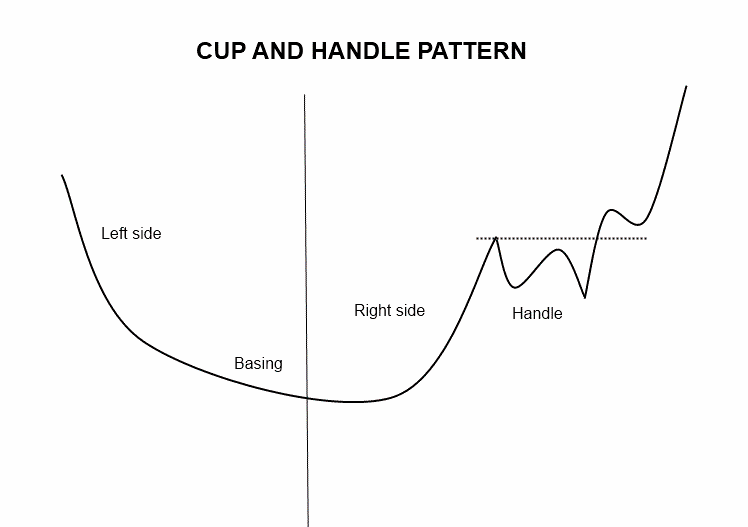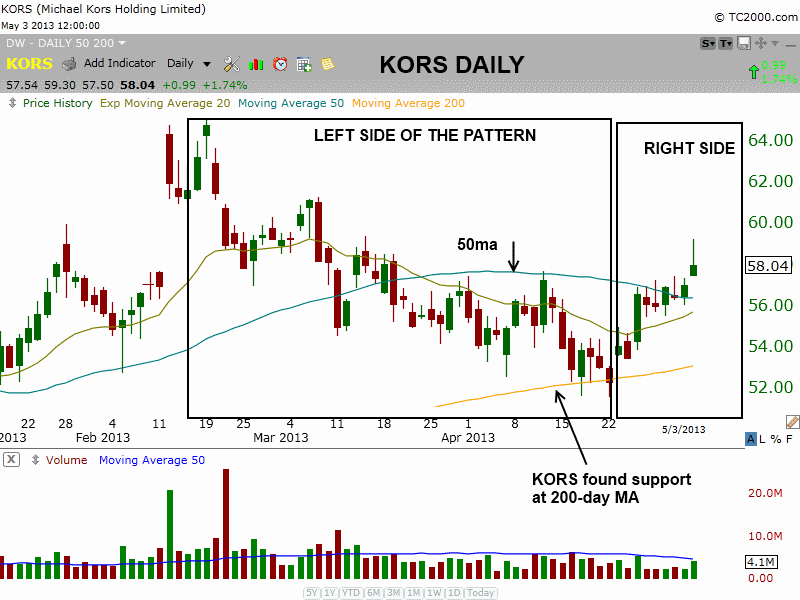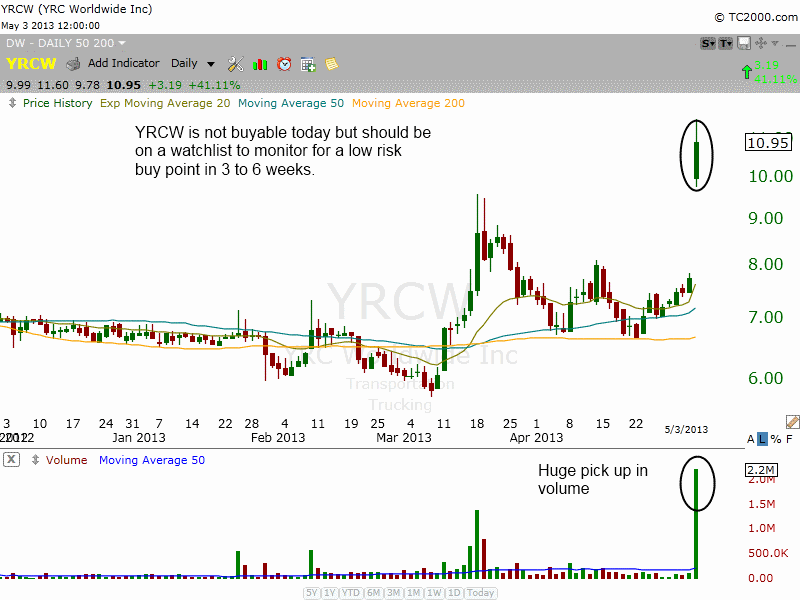Many active traders make the mistake of assuming that a winning system for swing trading stocks needs to be complicated. On the contrary, the best trading strategies are typically the most simple because they can be more easily and consistently followed.
Our methodology for picking stocks in our popular swing trading newsletter is simple, as 99% of the stocks we buy in our model trading portfolio come from one of the following three setups:
1. Combo Setup – The stock must have a combination of great earnings growth and strong technical price action (some type of bullish chart pattern). Typically, these stocks are growing their earnings at a rate of 30 to 40% (or more) quarter after quarter. Furthermore, these stocks will usually have an IBD relative strength rating of 80 or higher. Since we consider these stocks to be A-rated, they can usually be held for several weeks or more.
2. Price momentum – With this swing trade setup, earnings growth is not important, but the stock must have a top relative strength rating (95 or higher) and belong to an industry sector group that is outperforming the S&P 500. These stocks can be held for a few days to a few weeks.
Our recent trade in Celldex Therapuetics ($CLDX), a biotechnology stock with a relative strength rating greater than 95, is a good example of a swing trade setup based purely on momentum (bullish price action). We recently netted a 15% gain on this momentum swing trade, and a brief, educational video review of that trade can be found here.
3. Blast Off – Neither earnings growth nor a top relative strength rating is necessary with this type of swing trading setup. We are simply looking for a monster spike in volume on the daily chart, combined with a 4% or more gain in that same session. This indicates huge demand. If demand is sharply greater than supply, the price has no choice but to surge higher (which is why volume is such a great technical indicator).
With this setup, the one-day volume spike should be at least 2.5 to 3 times greater than the 50-day moving average of volume. These stocks can be held for a few days to a few weeks (as long as the price action remains excellent).
A current example of the “Combo” setup (#1 above) can be found in Michael Kors Holding Limited ($KORS). So, let’s take a closer look at how this trade meets our parameters.
For starters, the expected earnings growth of $KORS in the coming quarter is 81%, so the requirement for strong earnings growth is definitely covered. Its IBD relative strength rating is only 71, but that is compensated for by the monstrous earnings growth the company has been experiencing. Next, let’s take a look at the technical chart pattern.
After several months of choppy price action, $KORS is starting to come together nicely. Upon completing a 20% pullback off its February 2013 high, $KORS found support at its 200-day moving average, then rallied to reclaim its 50-day moving average last week. Now, $KORS is working on forming a bullish chart pattern known as a “cup and handle,” which looks like this:

As shown on the chart below, $KORS formed the left side of the cup and handle pattern from March to late April, and is now working on the right side of the pattern. The right side of the pattern will need several weeks to develop and form a handle with a proper buy point. During this time, the stock needs to hold above its 50-day moving average as well. This annotated chart of $KORS shows what we are looking for:

YRC Worldwide, Inc. ($YRCW) is a great example of a “Blast Off” setup (#3 above). Notice the huge volume and sharp gap above resistance that occurred last Friday (May 3):

As of the first 30 minutes of trading in today’s session (May 6), $YRCW is trading more than 20% higher than the previous day’s close. Obviously, such a huge follow-up price gap is not common; nevertheless, it shows you just how powerful the “Blast Off” setup can be:

If not already holding this stock, the setup is definitely NOT buyable for swing trading right now (we never chase stocks). However, if/when it forms a proper base of consolidation from here, we can begin to look for a low-risk buy point (at which time we would notify Wagner Daily, subscribers of our exact entry, stop, and target prices).
Did you find this article helpful and informative? What other types of swing trades do you like to take? Drop us a quick note below. Also, please don’t forget to share this post with your favorite social network.

Hi Deron,
Your trading education article is the best informative article.Thanks for post such as very useful and meaningful post.
Whatifoptions offers testing financial strategies and it is a web portal for options strategy. They take a comprehensive approach that combines fundamental, technical and event analysis when designing a stock trading strategy.
thank u.
Hi Harry,
Glad you enjoyed my article on stock trading strategy with our top 3 swing trade setups.
Thanks for your comments.
Deron